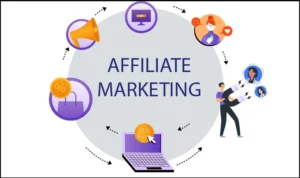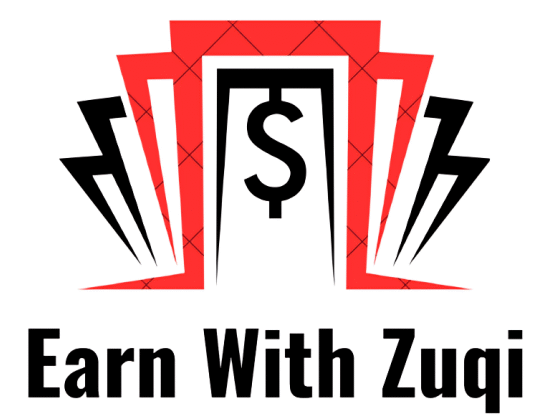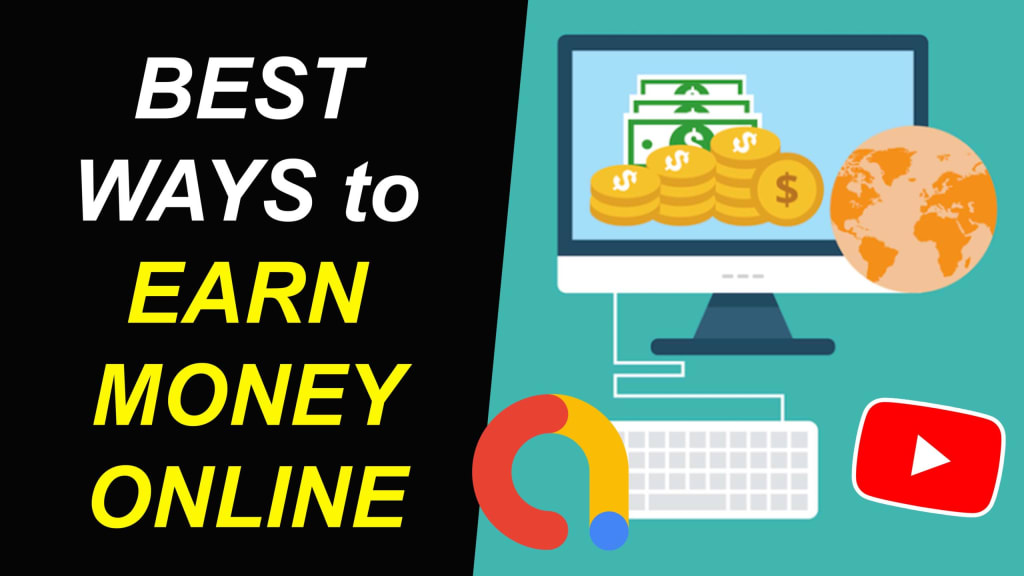Intoduction
I remember when I first heard about “passive income” – it sounded too good to be true. Making money while sleeping? Come on! But after years of experimenting and talking to dozens of successful online entrepreneurs, I’ve learned that it’s absolutely possible. The catch? It’s not really passive at first. You’ll work hard upfront, but eventually, your efforts compound into genuine passive income streams.
Creating and Selling Digital Products Without Investment
Digital products are fantastic because once you create them, you can sell them infinitely without additional costs. Think of them as your digital employees – they work 24/7 without asking for a raise!
Writing and Publishing E-books on Free Platforms
E-books remain one of my favorite passive income strategies because everyone has knowledge worth sharing. You don’t need to be the next Shakespeare – you just need to solve someone’s problem.
Using Amazon Kindle Direct Publishing for zero-cost publishing
Amazon KDP is completely free to use and gives you access to millions of readers worldwide. I’ve seen friends publish everything from cooking guides to business strategies. The platform handles printing, shipping, and customer service – you just focus on writing great content.
Here’s what makes KDP special: you earn royalties up to 70% on books priced between $2.99 and $9.99. That means a $4.99 book nets you about $3.50 per sale. Sell 100 copies monthly, and you’re looking at $350 in passive income.
Creating compelling content using free writing tools and resources
You probably already have everything you need. Google Docs works perfectly for writing and editing. For research, I use free resources like Google Scholar, Wikipedia (for initial research only), and industry blogs. Grammarly’s free version catches most grammar mistakes, and Hemingway Editor helps make your writing clearer.
One trick I learned: start with what you already know. If you’re good at organizing, write about productivity systems. Love gardening? Share your seasonal growing tips. Your existing knowledge is your biggest asset.
Building an author platform through social media and free marketing
Social media marketing for books doesn’t require fancy strategies. Share writing tips on Twitter, post behind-the-scenes content on Instagram, or start discussions in Facebook groups related to your book’s topic.
I know an author who built her entire platform by answering questions in parenting Facebook groups. She never directly promoted her book but became known as the helpful expert. When she finally mentioned her parenting guide, it practically sold itself.
Developing Online Courses Using Free Course Platforms
Online courses can generate more income per customer than e-books, often selling for $50-500 compared to $5-15 for books.
Recording video lessons with basic equipment and free software
Your smartphone probably shoots better video than professional cameras from ten years ago. Good lighting (sit near a window during daytime) and clear audio (use your phone’s voice memo app to test sound quality) matter more than expensive equipment.
For editing, try DaVinci Resolve – it’s completely free and professionally powerful. OpenShot and Shotcut are simpler alternatives that work great for beginners. I edited my first course entirely on my phone using the free version of InShot.
Uploading courses to Udemy, Teachable, and other platforms
Udemy handles all the technical stuff – payment processing, hosting, and even marketing your course to their millions of users. They take a percentage of sales, but you get access to their massive audience without spending anything on advertising.
Teachable offers more control over pricing and branding. Their free plan lets you host unlimited courses and students, though you’ll pay transaction fees until you upgrade.
Creating course materials using free design and presentation tools
Canva’s free plan includes thousands of templates perfect for course slides and workbooks. Google Slides works well too and automatically saves your work to the cloud. For PDFs, use LibreOffice Writer – it’s free and exports professional-looking documents.
One successful course creator I know uses only Canva and Google Slides for all her materials. Her courses regularly earn $2,000+ monthly because she focuses on valuable content rather than fancy graphics.

Content Creation and Monetization Strategies
Content creation is the foundation of most successful passive income strategies. You’re building an audience of people who trust your expertise and recommendations.
Starting a Blog for Long-term Revenue
Blogging feels old-school, but it’s still one of the most reliable ways to build passive income. Google processes over 8 billion searches daily – people are constantly looking for information you might have.
Setting up free blogs on WordPress.com, Blogger, or Medium
WordPress.com offers free hosting with your-blog.wordpress.com URLs. It’s simple to use and includes basic customization options. Blogger integrates seamlessly with Google services and allows custom domains on the free plan.
Medium is unique because it has a built-in audience and Partner Program that pays based on reading time. You won’t control the platform, but you can start earning immediately if your content resonates.
Writing valuable content that attracts organic search traffic
The secret to blog success is answering questions people actually ask. Use tools like Answer the Public or browse Reddit communities in your niche to find common questions.
Write like you’re helping a friend. Explain concepts clearly, share personal experiences, and always provide actionable advice. Google rewards content that genuinely helps users, not content stuffed with keywords.
I know bloggers who write just two posts monthly but earn $2,000+ because they focus on high-value, thoroughly researched articles that rank well in search results.
Monetizing through affiliate marketing, ads, and sponsored content
Affiliate marketing means recommending products you actually use and earning commissions on sales. Amazon Associates pays 1-10% depending on product categories. Other companies offer higher commissions – sometimes 30-50% for digital products.

Building YouTube Channels from Scratch
YouTube is the world’s second-largest search engine, and people watch over a billion hours of content daily. There’s room for everyone if you find your niche.
Creating videos using smartphones and free editing software
Modern smartphones shoot excellent video. Focus on good lighting (face a window or shoot outside) and clear audio (get close to your phone or use earbuds as a microphone).
For editing, try DaVinci Resolve, OpenShot, or even iMovie if you have an iPhone. Keep it simple initially – basic cuts, transitions, and text overlays work fine. Content quality matters more than production value.
Developing content strategies that build subscriber bases
Successful YouTube channels solve problems, entertain, or educate. Pick one main focus and be consistent. Whether it’s cooking tutorials, financial advice, or product reviews, stick to topics your target audience cares about.
Post regularly – even weekly uploads help more than sporadic bursts. Engage with comments genuinely, collaborate with other creators in your niche, and always end videos with clear calls-to-action.
Investment-Free Online Business Models
These business models require time and effort but no upfront financial investment. They’re perfect for testing ideas and building income streams.
Affiliate Marketing Without Startup Costs
Affiliate marketing is recommending products you believe in and earning commissions when people buy through your links. It’s simple but requires building trust with your audience.
Joining free affiliate programs across various industries
Amazon Associates is the easiest starting point – they sell everything, and most people already trust Amazon. Commission rates are lower (1-10%) but conversion rates are higher.
Other popular programs include ClickBank (digital products with 10-75% commissions), ShareASale (thousands of merchants across all industries), and individual company programs that often pay higher rates.
Creating content that naturally incorporates affiliate links
The key is recommending products you actually use and would suggest to friends anyway. Write honest reviews, create comparison guides, or mention products while solving problems.
Avoid being too sales-focused. Your audience should feel like you’re helping them make informed decisions, not pushing products for commissions.
Building email lists using free email marketing tools
Email marketing consistently outperforms social media for sales. Mailchimp offers 2,000 subscribers and 12,000 emails monthly for free. ConvertKit’s free plan includes 1,000 subscribers with unlimited emails.
Offer valuable lead magnets – free guides, checklists, or mini-courses – in exchange for email addresses. Then nurture subscribers with helpful content and occasional product recommendations.
Dropshipping with Zero Initial Investment
Dropshipping lets you sell products without holding inventory. When customers order, suppliers ship directly to them.
Finding suppliers who offer free account setups
AliExpress connects you with thousands of suppliers offering dropshipping services. Most require no upfront fees. Oberlo integrates AliExpress with Shopify stores, though it requires a Shopify subscription.
Domestic suppliers often provide faster shipping and better customer service but may require minimum orders or monthly fees once you scale.
Using free e-commerce platforms and website builders
WooCommerce (WordPress plugin) creates fully functional stores for free, though you’ll need hosting. Square Online offers completely free e-commerce sites with square. site URLs.
Facebook and Instagram Shops let you sell directly on social media platforms without separate websites – perfect for testing products with minimal setup.
Marketing products through organic social media strategies
Focus on platforms where your target customers spend time. Instagram works well for visual products, LinkedIn for business tools, TikTok for trending items.
Create valuable content around your products. If selling kitchen gadgets, share cooking tips and recipe videos. Selling fitness equipment? Post workout routines and health advice.

Freelance Work Transition to Passive Systems
Many freelancers eventually burn out from trading time for money. Smart freelancers build systems that generate ongoing income.
Converting one-time services into recurring revenue models
If you design websites, create template packages or maintenance services. If you write content, develop content calendars or strategy templates. If you consult, build frameworks others can follow.
Think about common client requests and systemize solutions that can be delivered repeatedly without starting from scratch each time.
Creating standard operating procedures that can be automated
Document your processes thoroughly. Create templates, checklists, and workflows that reduce the time needed for similar projects. Eventually, you might even hire others to handle routine tasks while you focus on high-level strategy.
Building client bases that generate repeat business automatically
Focus on services that clients need regularly rather than one-time projects. Monthly reporting, ongoing social media management, or recurring consulting calls provide predictable income.
Develop systems that deliver consistent results, making it easy for clients to continue working with you long-term.
Identifying market gaps that can be filled with simple software
Look for repetitive tasks people perform manually, especially in business contexts. Simple tools that save time or automate processes often have willing audiences.
Popular SaaS categories include project management, social media scheduling, email automation, and industry-specific tools for restaurants, salons, or other businesses.

Using free development tools and hosting options initially
Many programming languages and development frameworks are completely free. Heroku, Netlify, and others offer free hosting tiers suitable for testing ideas and serving initial customers.
Start small and simple. A basic tool that solves one problem well is better than a complex system trying to do everything.
Creating subscription-based solutions that scale automatically
SaaS businesses generate recurring monthly revenue from subscribers. Even a simple tool with 100 users paying $10 monthly generates $1,000 in recurring revenue.
Focus on solving ongoing problems rather than one-time needs. People pay monthly for tools they use regularly, not for solutions they need only occasionally.
Conclusion
The most successful passive income earners combine multiple strategies rather than relying on single income streams. This provides stability and maximizes earning potential.
Start with one method that aligns with your existing skills and interests. Master it before adding other streams. Someone good with words might start with blogging and affiliate marketing before moving into course creation or podcasting.
FAQs
How long does it take to see results from free passive income methods?
What are the most reliable free passive income methods for beginners?
How much can realistically be earned from free passive income strategies?
Are there any hidden costs in supposedly free passive income methods?


nice